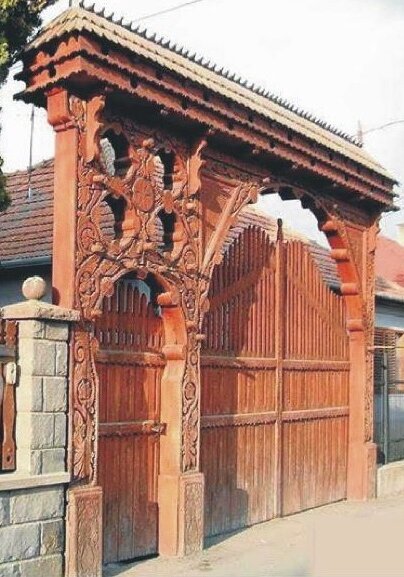Revisiting a Hypothesis: Tracing Early Buddhist Heritage in Central-Eastern Europe
by Katalin Puskas Khetani
The similarities between the Szekler gates, predominantly found in Transylvania in the Carpathian Basin. and the sacred Asian gate building tradition.

Publication: Technium, Social Sciences Journal, vol. 24, pp. 791-815 | ISSN 2668-7798 | www.techniumscience.com
Published: October 2021
Author: Katalin Puskas Khetani
Pages: 24
Language : English
pdf 5.2 MB
The ethnic connection between Central Europe and Asia has been widely researched. In starting her essay, the author mentions the hypothesis that “tribes that eventually settled in the Carpathian Basin might have migrated from the Altai Mountain area around 100 AD, and that these tribes and people had even earlier connections with the Xiongnu people. The Xiongnu empire was located approximately where present day Mongolia is around 140BC. The first historical record, mentioning the possibility that the Huns are related to the Xiongnu, was written by Joseph de Guignes, a French Sinologist, in his book ‘Histoire generale des Huns, des Turcs et des Mogols’ (1756). One of his followers, Edward Gibbon, in his publication ‘Decline and Fall of the Roman Empire’ (1776), confirmed the views introduced by de Guignes. Almost a hundred year later, the priest and eminent scholar, Dr Sir Ervad Jivanji Jamshedji Modi (1854−1933), in ’The Early History of Huns and their inroads in India and Persia’ is referring to and agrees with de Guignes’ earlier theory. Modi also describes the possible connection between the Hunnic people and Xiongnu, and further to this, he explains that the Huns, under different names, had relations with the nations of all the four great kingdoms in the first few centuries before and after Christ (China, India, Persia and Rome).”
In any case, there were plenty of opportunities for cultural exchange and influences between Asia and Europe through the centuries, among them the Silk Road trade. Focusing on the “Szekler gates”, an architectural tradition of the Székelys, an important Hungarian ethnic subgroup of Transylvania now present in Hungary, Serbia and Romania, the author compares their symbolical function, building and ornementation patterns with the sacred gate tradition of Asia, one example for the latter being the Angkor Thom gates.
This stimulating study in comparative architecture opens many avenues for a better understanding of East-West intercultural patterns in architecture and decorative arts.
Author’s map
Photo: Carved Szekler gate from Kezdivasarhely, Transylvania (author’s photo)
Tags: architecture, ornementation, Buddhist influences, East-West, comparative studies, Silk Road
About the Author

Katalin Puskas Khetani
Katalin Puskas Khetani is an architect and independent researcher from Hungary, currently based in Kuala Lumpur.
She researches history of architecture and the paths to sustainable architecture. In her 2020 essay on the Quest for the Aesthetics of Sustainable Architecture in the Digital Age, she explored the “biomimicry” approach to novel building techniques.


